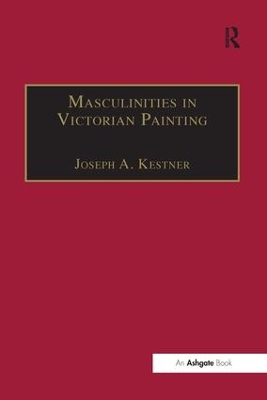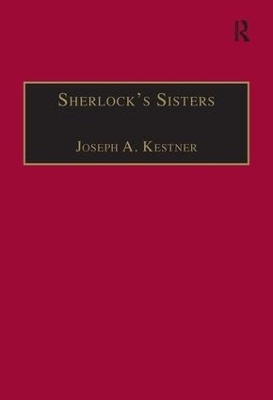The Nineteenth Century
3 total works
This fully illustrated study examines the construction of masculinity in culture based on an analysis of pictorial representations of the male in a wide range of contexts: social, historical, legal, literary, institutional, anthropological, educational, marital, imperial and aesthetic. Powerful images from the work of dozens of Victorian artists - from Leighton, Waterhouse, Burne-Jones and Alma-Tadema to Dicksee, Pettie, Watts, Woodville and Tuke to name a few - are used to illustrate the 5 key paradigms of masculinity: the classical hero, the gallant knight, the challenged paterfamilias, the valiant soldier and the male nude. Aspects of 20th-century theory such as rescue compulsion, male sexuality, the male gaze and racial ideas are also considered. The author concludes that maleness was, and is, learned and 19th-century ideas still influence the construction of manhood today; that social institutions are influenced by, and themselves use, artistic representation; that artistic images strongly influence ideas of gender; and that multi-disciplinary cultural study is the best way to examine the formation of gender ideologies.
Examines the range of detective literature produced between 1901 and 1915 in Britain, during the reign of Edward VII and the early reign of George V. The book assesses the literature as cultural history, with a focus on issues such as legal reform, marital reform, surveillance, Germanophobia, masculinity/femininity, the "best-seller", the arms race, international diplomacy and the concept of "popular" literature. The work also addresses specific issues related to the relationship of law to literature, such as: the law in literature; the law as literature, the role of literature in surveillance and policing; the interpretation of legal issues by literature; the degree to which literature describes and interprets law; the description of legal processes in detective literature; and the connections between detective literature and cultural practices and transitions. The book investigates many of the "canonical" and less canonical writers of detective literature, focusing on major figures including Conan Doyle, Chesterton, Bennett, Conrad and Buchan, but also reinvestigating writers such as Bramah, Mason, Barr, Bentley, Prichard and Childers.
Important women writers of the genre are also discussed, including Lowndes, Orczy and Meade.
Important women writers of the genre are also discussed, including Lowndes, Orczy and Meade.
Sherlock's Sisters: The British Female Detective, 1864-1913 examines the fictional female detective in Victorian and Edwardian literature. This character, originating in the 1860s, configures a new representation of women in narratives of the nineteenth and twentieth centuries. This analysis explores female empowerment through professional unofficial or official detection, especially as this surveillance illuminates legal, moral, gendered, institutional, criminal, punitive, judicial, political, and familial practices. This book considers a range of literary texts by both female and male writers which concentrate on detection by women, particularly those which followed the creation of Sherlock Holmes by Arthur Conan Doyle in 1887. Cultural movements, such as the emergence of the New Woman, property law or suffragism, are stressed in the exploits of these resourceful investigators. These daring women deal with a range of crimes, including murder, blackmail, terrorism, forgery, theft, sexual harassment, embezzlement, fraud, impersonation and domestic violence. Privileging the exercise of reason rather than intuition, these women detectives are proto-feminist in their demonstration of women's independence. Instead of being under the law, these women transform it. Their investigations are given particular edge because many of the perpetrators of these crimes are women. Sherlock's Sisters probes many texts which, because of their rarity, have been under-researched. Writers such as Beatrice Heron-Maxwell, Emmuska Orczy, L.T. Meade, Catherine Pirkis, Fergus Hume, Grant Allen, Leonard Merrick, Marie Belloc Lowndes, George Sims, McDonnell Bodkin and Richard Marsh are here incorporated into the canon of Victorian and Edwardian literature, many for the first time. A writer such as Mary Elizabeth Braddon is reassessed through a neglected novel. The book includes works by Irish and Australian writers to present an inclusive array of British texts. Sherlock's Sisters enlarges the perception of emerging female empowerment during the nineteenth century, filling an important gap in the fields of Gender Studies, Law/Literature and Popular Culture.


